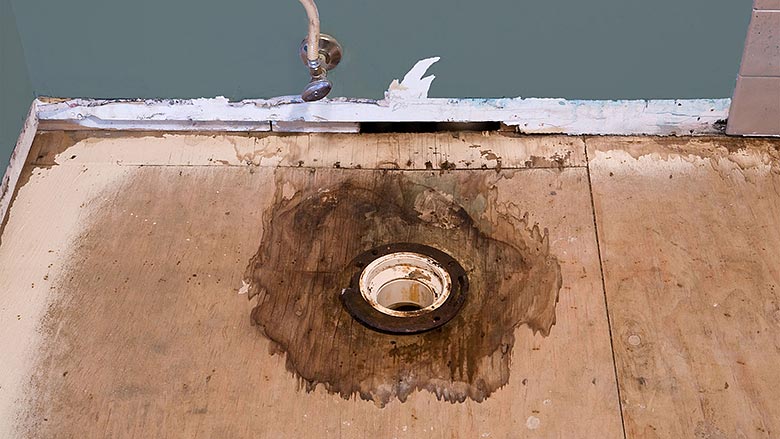Just about every person has got their own unique opinion when it comes to Common Causes of Water Damage in a Bathroom.

The restroom is exceptionally susceptible for damp buildup and prospective water damages due to the frequent use water in it. This article uses straightforward inspection methods to aid discovering water damages hazards.
The regular use water in the bathroom makes it incredibly prone for moist build-up and also possible water damage. By examining it on a regular basis, you can reduce water associated problems.
The adhering to set of evaluations is simple to do and also ought to be done when in every 3 months in order to maintain your restroom in good shape and also to stop possible water damages triggered by the tub, the shower, pipeline joints and also plumbing, sinks, cabinets, and the toilet
Do not overlook doing these evaluations as well as be detailed while performing them. Keep in mind that these basic assessments can conserve you a great deal of money by offering early indicators for water damages
Sinks and also Cabinets
Sinks and also closets are revealed to dampness and humidity daily and are typically neglected. Examine on a regular basis under the sink and on the countertop above it. Fix any type of drip in the catch as it may suggest drainpipe troubles. Check out the sink, slow-moving draining pipelines might show an obstructed drainpipe. Change sink seals if they are split or loose.
Bathtub and Shower
The shower and bathtub require special attention and also upkeep. Inspect the ceramic tiles and change if split. Ensure that there is no missing cement in between the ceramic tiles. Examine and change broken caulking at joints where the wall surfaces satisfy the floor or the bath tub. Blocked drains and pipelines problems will certainly stop the bathtub from drying out as well as may show severe problems under the tub. Consult with a specialist right away to stop architectural damage. Take notice of discolorations or soft locations around the tub walls as they might suggest an internal leakage.
Plumbing
Signs for water damage are tough to discover given that many pipelines are set up inside the wall surfaces.
Pay special attention to floor covering and wall surfaces moisture and also stains as they might suggest an invisible plumbing trouble. Check dampness levels in adjoining rooms also.
The Toilet
The toilet is an at risk water junction. Examine the water lines and search for leakages around the toilet seat, in the pipe, and under the water container. If you spot any kind of signs of dampness on the floor around the commode, check for leakages in the toilet rim and also tank seals.
Know that hanging toilet dish deodorants boosts the chances for blockages.
Water Damage Signs In The Bathroom To Avoid Cleanup
Musty smell
This is one of the easiest signs to catch because musty smells are so odorous. The damp, earthy, moldy smell should be a big red flag. The smell will develop when moisture gets trapped in surfaces, and begins to facilitate mold growth. Leaking pipes under cabinets, inside walls, and behind shower fixtures will cause moisture to stay trapped and not dry, which will lead to mold growth and spread. As soon as you notice any musty smells in your bathroom, have it checked for hidden water damage and cleanup signs.
Visible mold
If the smell isn’t there to give it away, sometimes you will actually see mold growth. Finding mold in your bathroom is a serious problem, because mold is very harmful to your health. By the time mold growth is visible, it also means that water damage has already occurred and been present for some time. The only way the mold problem can be resolved is to find the source of the moisture and get it stopped. To safely and adequately remove mold, you need to have professionals handle the remediation. Do not waste any time in getting mold problems addressed, fixed, and sanitized so that you can protect you and your family from the many respiratory symptoms caused by mold exposure.
Damaged floors
Bathroom floors should be able to withstand some exposure to water while still remaining in good condition. However, when excess exposure or water leaks occur, they will begin to damage even the most water-resistant flooring. If you notice any cracking, bubbling, staining, or warping on your bathroom floors, there is probably a water leak somewhere causing the distortion. If you notice areas of the floor have become softer, or even have a spongy feeling, there is probably damage to the subfloor. Subflooring is typically made up of plywood. When plywood is exposed to water or moisture, it will absorb it. Once it has become saturated, the weight of the excess water will cause the wood to swell and soften. Check the floors in your bathroom frequently to catch any of these sings before they lead to damaged subflooring.
Changes on walls
When water leaks behind walls, it will cause changes in the drywall. Peeling plaster, blistering paint, and soggy wallpaper are all good indicators that excess water is building up behind the wall. Water leaking behind drywall will cause it to swell and be soft to the tough. If you start to notice gaps along the trim of your walls, or where tile meets the wall, it could also be a strong indicator that there is a leak behind the wall. Any changes, distortion, or damage on the walls should be evaluated as soon as you notice it to prevent further water damage and cleanup.

We hope you enjoyed our section about Common Causes of Water Damage in a Bathroom. Many thanks for taking a few minutes to read our piece of content. Make sure you take a moment to distribute this page if you liked it. Bless you for your time. Come back soon.
Request Appointment